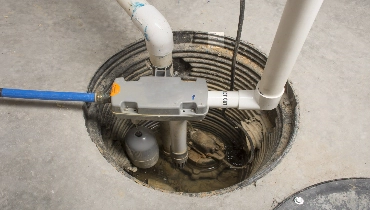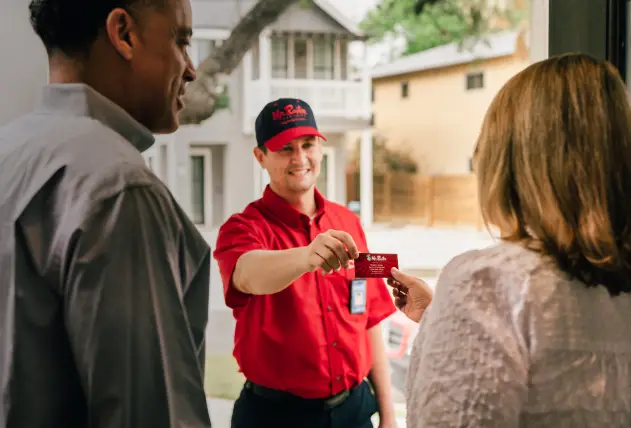
Flooding in Canada is on the rise, and so are the costs associated with cleaning up after a flood.
A 2017 study found that floods now cost homeowners more than the damage caused by fires or thefts. With more than 2 million households across Canada considered to be at "very high risk" of flood damage, those rising costs are a real threat.
Too many homeowners don't think about protecting their properties against a flood until it's too late. Whether you think your home is out of the flood plain or you simply don't think the damage will be worth the time and money that goes into taking care of a sump pump, you might be thinking twice.
But installing a sump pump could save you thousands of dollars. Not to mention it could save your family's belongings, and keep you from having to leave your home after damage and during the extensive repairs that follow.
If you're thinking about getting a sump pump or replacing the one you have, keep reading. Our Calgary Plumbers included everything you need to know about sump pump installation.
Signs That Your Home Needs a Sump Pump
Just because your home has never needed a sump pump in the past, or a new home you've bought doesn't come with one, doesn't mean that you'll never need it.
There are plenty of reasons why a home that's never had a sump pump may need to have one installed.
Your Basement Has Flooded at Least Once in the Past
The most obvious sign is that the basement of the home has flooded.
Whether you've experienced a dozen floods in the past or this is your first, all it takes is one instance of water getting into where it shouldn't be to indicate that homeowners need to take action.
While Calgary doesn't have to deal with storm surges or typhoons, the city does see widespread flooding from time to time.
In 2013, Calgary saw its largest flood since 1932. Heavy rainfall, coupled with melting snowpack in the Rocky Mountains, led water down the mountains and into the southern Alberta watersheds.
While some 80,000 people were evacuated, five lost their lives, and countless homes were damaged.
It doesn't take flooding of that amount to cause your basement to flood. If your landscape slopes towards your home or a storm settles over your area dumping rain hour after hour, the water may rise.
On average, a flooded basement will cost homeowners $43,000 to repair. Besides the cost, you could lose priceless family possessions like photographs or heirlooms. You'll also face weeks of cleanup, and sometimes months of repairs.
You may not be able to stay in your home while these are going on. And if the water isn't cleaned up quickly and thoroughly, mold could begin to grow, putting your home and your family at risk.
If you've experienced just one flood in the past, you'll understand why a sump pump is such a great investment.
You Live in a Low-Lying Area
You can live in a home for years without experiencing a flood, only to have the water rise and find yourself with a wet basement.
If you've recently bought a new home or had one built, depending on where it is located, there's no guarantee that you won't face a flood sometime in the future.
The flood in 2013 was a 1-in-100 flood. That means that in any given year, there is a 1 percent chance that the city will experience the same level of flooding again.
While it's a slight chance, there is still a chance. If you lost a home or experienced damage during the 2013 flood, you understand that the small risk seems like anything but that.
If you live close to the Bow and Elbow River or other waterways prone to flooding, your chance of damage might be much more than 1 percent each year.
As a general rule, if your home is close to a water source that floods or is located in a low-lying area, a sump pump is a good idea. At worst, it'll be an insurance policy that you hopefully won't have to use.
Your Yard Turns Into a Swamp During or After Rain
It doesn't take a flooded river to turn your basement into a pond.
If you've ever noticed that your yard turns into a swamp after even a small rainstorm, your basement may be next.
Rain or melting snow pools, it will eventually saturate the ground. As it continues raining or the snow melts, that water will have nowhere else to go. That's when it will continue into any available space, like your basement.
Sloping your yard or adding downspouts and channels to direct water away from your home can help. But the rapid melting of snowfall or heavy rain may overpower those measures and leave you wishing you'd added a sump pump sooner.
You Recently Built a Home You Want to Protect
You wouldn't build a new home without adding a home insurance policy to protect it.
Whether you built a home yourself or bought a new one, adding a sump pump is a good way to add an additional layer of protection.
How to Tell When Your Sump Pump Needs Replacing
Like any household appliance, a sump pump won't last forever.
Just like your hot water heater or your fridge, there are a number of factors that determine how long a pump will last and when you'll need to replace it.
For instance, the more you use a sump pump, the sooner you'll have to replace it. But even if it's sitting unused, your sump pump will need replacing, usually within 6 to 10 years of installing it.
Here are a few signs that can help you figure out when your sump pump needs to be replaced.
Your Sump Pump Turns On and Off
When you have water in your basement, your sump pump should power on automatically. Once on, it should keep running until all the water is gone.
Then, it should turn off, unless more water gets in.
If you notice that your sump pump is cycling on and off, even when there is still water in your basement, it's likely that it's time to replace it.
Your Sump Pump Runs Longer Than It Once Did
Another sign to look for while your sump pump is operating is that it's taking longer than it once did to clear out the water.
A sump pump, when working properly, should be able to pump out water within just a few minutes. After all, it starts working as soon as water is present, so there shouldn't be as much water to get rid of.
But if your sump pump is suddenly taking longer to clear out your space, that's a sign that it is wearing out.
Your Sump Pump Doesn't Stop Running
A sump pump that never stops running, even after the water is gone, is also a problem.
This usually indicates that the float arm is broken.
The float arm can tell the pump when there is water present that needs to be pumped out.
But if the float arm doesn't lower and flip the switch once the water is gone, the pump doesn't know that it needs to stop.
Sometimes a sump pump repair can get you back up and running. But if your pump is older or showing other signs that it is wearing out, a replacement might be a better choice.
Rust or Damage Is Visible
Rust or other visible damage is perhaps the most obvious sign that it's time for a replacement.
Rust will leave your sump pump susceptible to breaking down. The last thing you want is for it to break when you need it the most.
Shopping for a New Sump Pump
Before you can learn how to install a sump pump, you'll need to find a new unit.
There are two types of sump pumps to choose from.
The first is a pedestal. This type of pump is mounted above the sump pump. This makes it easy to access your pump for regular service or to test it out.
If you don't use your sump pump often, this may be the better choice. You can easily check in to make sure that it's operating properly, just in case a disaster strikes.
The next type of sump pump is a submersible. This type of pump sits in the sump pit. Unlike a pedestal, this one is out of sight.
While that makes it harder to access it, it also means you won't have to look at it in your basement.
What You Need to Know About Sump Pump Installation
Once you've decided which type of sump pump is right for your home, it's time to learn how to install a sump pump in the basement of your home.
Typically, sump pumps are hardwired into your home's electrical system. If that isn't an option, they can also be plugged into a wall outlet.
The placement of your sump pump is very important. When your basement starts to flood, it needs to be located in a spot where the float switch will be activated.
Otherwise, your sump pump may never turn on and have a chance to do its job.
If a sump pump isn't properly installed, or if it's placed incorrectly, it may fail.
Another thing to think about when installing a sump pump is having an alarm.
A sump pump alarm is designed to let you know when your sump pump starts working. The alarm will let you know that water is getting in. It will also help you to be prepared; if your sump pump stops working, you'll know that your home is flooding and have time to get out or move your belongings out of danger.
Installing a Backup
Whether your sump pump is hardwired into your home's electric system or plugged into the wall, a power outage will spell disaster.
That's why most homeowners also add a battery backup.
This battery is designed to kick in when the power goes out. That way your sump pump can keep working through storms or whatever else happens.
If you already have a sump pump installed in your home, but don't have a battery backup, you don't need a new pump. Instead, you can have a battery backup added to your unit.
Who Installs Sump Pumps?
If you're wondering who installs sump pumps, there's technically more than one answer.
You could buy your own sump pump. If you don't have electrical experience, you can always choose a unit that you can plug into a wall outlet.
But unless you have experience installing sump pumps, this is one home improvement job that you should leave to the pros.
Even a small error can leave your sump pump useless, and your home prone to flooding. A professional installation ensures that your sump pump is in the right place, hardwired correctly, and ready with a battery backup, just in case.
That way, when the rain starts coming down, you won't be left worrying about whether your sump pump will protect you.
Protecting Your Home From Water Damage
A sump pump installation is the best way to protect your home from water damage.
Whether your basement has flooded in the past or you're simply looking for a way to protect yourself from expensive, devastating damage, a sump pump is always a good investment.
If you're ready to install a sump pump in your home, want to add a battery backup to your existing unit, or need some emergency help with your flooding, plumbing, or pump, we can help. Contact us today, or call our emergency line to get help fast.

